THE MODERN MINUTEMAN Volume 25, May 2025
Blue Jeans, Split Rig Loadout, and Property Patrolling...
PROPERTY PATROLS
Patrolling
“In warfare patrolling is the basis of success, it not only provides eyes to the side that excels at it, and blinds its opponents but through it, the soldier learns to move confidently in the element in which he works”
~UK Pathfinder’s
Property Patrols are a common theme on my YouTube channel. I have a camp on approximately 100 acres of forested land that helps act as a proving ground for training in such things. There are trails and fence lines to be checked, game trails to mark, tree stand areas to locate and plan for, trees to mark for cutting down for firewood, small game to hunt, predators (both 4-legged and 2-legged) to watch for, and so much more. Grunt Proof and I have discussed property patrols in depth many times trying to bridge the gap for what works in the military and what parts work for the Modern Minuteman. The following is a blend of his thoughts and mine on the subject of Property Patrols.
Conducting patrols will be a required function of any Minuteman or Minuteman group. Patrols are missions to gather information and/or to conduct combat oriented
operations. The main types of patrolling would be:
Reconnaissance Patrols; collects information about the enemy, terrain, and resources without detection or engagement, if possible.
Combat Patrols; usually assigned missions to engage in combat. They gather information as a secondary mission.
Patrolling is going to be a very large part of what the Modern Minuteman will be doing. It may be your neighborhood, community, property, or even outside of your property or community. Part of this is that you need to be intimately familiar with your area and surroundings. You need to know who belongs and who doesn’t as well as knowing where resources are, obstacles are located, no-go areas, avenues of travel, key infrastructure locations, and so much more. An entire book can be written (and there are tons of them out there) on patrolling but here we want to focus on what patrolling is and why you should be doing it.
“Whether you’re in a doomsday tactical scenario or simply patrolling the area around your homestead, the principles of patrolling are relevant, and should be applied. Unless you’re just going out for Instagram pictures, a patrol is not just “go out in the woods and walk around looking at stuff.” Even a basic property patrol should include some sort of planning. No, it does not have to be a full blown 5-paragraph Operations Order – a simple 5Ws, “who, what, when, where, why,” and a how, which is your concept of operations, will suffice.” ***Grunt Proof***
All patrols should be conducted using the following five basic principles (shared courtesy from Grunt Proof):
1. Planning: gathering information, setting objectives, and creating a detailed plan of action. This includes identifying potential threats, establishing routes, and allocating resources (logistics). Effective planning ensures that patrols are conducted with a clear purpose and strategy. Every patrol should serve a specific purpose, and will often lead to further patrols or missions.
Example: you have recently purchased land in a rural area would like to get to know the area around your property. This could become an Area Reconnaissance: you want to identify all the trails in and out of your property, roads nearby, or other civil infrastructure in your area, as well as key terrain in that area. This initial reconnaissance will give you a great deal of intelligence, which will lead to follow on patrols. Next, you may conduct “Route Reconnaissance,” where you will learn more about those trails coming from the National Forest and into your property.
2. Reconnaissance: gathering information about the area to be patrolled. It includes identifying key locations, potential hazards, and points of interest. This information allows patrols to make informed decisions and respond effectively to any situation.
Back to the first example, before you head out for your Area Reconnaissance, you can conduct map reconnaissance on google maps, earth, or your own printed topo map, and already identify a lot of the key terrain in the area you will patrol.
3. Security: This includes maintaining communication, practicing situational awareness, and being prepared for any security threats.
Again with our property patrol: we develop a communications PACE plan with our family or neighbors, and can already begin to develop a Standard Operating Procedure (SOP) for homestead defense and future patrols. “I am going here to do this, and should be back by this time. Unless I call you, if I am not back by this time, you should do this.” You will also be “reconnoitering” dead spots for comms while you are out, as well as testing your skills in mission planning and refining your SOP.
4. Control: maintaining discipline and order during patrols. It involves adhering to the established plan or SOPs, following chain of command, and ensuring that the patrol’s objectives are met. Control is essential for the safety and success of the patrol.
On your property Patrol or Area Reconnaissance, go ahead and practice light, sound, and litter discipline. Practice SLLS – stop, look, listen, smell; Get regular radio checks to rehearse and refine your PACE plan.
5. Common Sense: when working with groups, we encourage patrol teams to use their judgment and make decisions based on the situation at hand. Sounds like we should have a firm understanding of how to apply METTTC, right? While following established SOPs is important, common sense allows for flexibility and adaptability. How are we supposed to update, or refine our SOPs if we don’t even allow people to test them and adapt to begin with?
AIMS OF PATROLLING
Obtain information: Knowledge is power and can be the key to success, this is sometimes gained by daring to get close to the enemy, it’s the same in any walk of life from business to entertainment, knowing what the opposition is up to, gives you the edge.
Dominate the ground: Denying the enemy freedom of movement, preventing him from mounting patrols against you, owning the ground in front of your position.
Destroy and Disrupt: Fighting patrols can create havoc and fear far beyond their size, but this requires a disciplined team and a strong patrol commander
Planning is going to be the most important part of any patrol. There is the organizing of the mission, selecting the right people, coordinating between other persons or groups that may be involved, contingency planning, and more. Good plans are made better by good people, which makes good training all the more important. You can have a great plan but if your people aren’t well versed in the skills required to complete that mission then it is all for nothing.
So how does this pertain to you and me, the Modern Minutemen? Watch the attached video from Grunt Proof to see how he lays it out for us. This is probably the best video I have seen on this subject. Available here in written form as well.
THE RECON LEADER’S GUIDE
(From The Professional Citizen Project)
The Recon Leader's Guide is a compact quick reference guide to use with the CM series of manuals. It is not a standalone manual, this is a tool for you to use in the field to help keep you on track.
Includes pages of easy to use, relevant tactical and technical information combined with a checklists and graphics. The perfect ruck or cargo pocket size at 4.5 x 6.5 inches.
Order your copy of the Recon Leader’s Guide here.
Shoppable links to the above items:
221B Asset Tactical Jeans link
Amazon Split Rig and pouches link
BLUE JEANS IN THE FIELD
(But Jay, jeans will get you killed)
Some history on jeans being worn in the field during combat operations…
During the Vietnam War, some Navy SEALs, particularly in the later years, were known to wear blue jeans, often Levi's 501s or 505s, during combat operations. This choice was often due to the practical advantages blue jeans offered in the jungle environment, such as being more durable, quieter, and less likely to snag than standard issue fatigue pants. The tighter fit and durability of the jeans also provided better insect and leeches protection. Plus it made a fierce fashion statement.
Here's a more detailed look at why SEALs adopted blue jeans:
Durability:
Blue jeans were significantly more durable than the standard issue cotton fatigue pants, which were prone to tearing in the harsh jungle environment.
Quietness:
The tighter fit of jeans reduced the noise made when walking or moving through vegetation, which was a crucial consideration in covert operations.
Comfort:
SEALs found that jeans were more comfortable to wear in the jungle, especially when wet, as the tighter weave allowed water to drain more quickly.
Protection:
The thicker denim of jeans provided better protection against insects and leeches, which were prevalent in the region.
"Status Symbol":
The use of blue jeans became a symbol of a particular SEAL team, even a fashion statement within the ranks
Practicality:
Some SEALs also found that the tighter fit of jeans made them less cumbersome in the jungle, and that the standard issue pants with larger pockets often retained water.
Color:
While the blue color of jeans might seem counterintuitive in a combat environment, the color could be camouflaged with mud.
The following are anecdotes and insights from former Vietnam SEALs:
“Durable, drained faster, didn’t snag, quieter, most ops were at night so wearing cami (camouflage) pants wasn’t necessary.” -Anonymous member of X-Ray platoon 1970/71.
“One reason was the legs were tighter and didn’t rub and make noise when you walked, especially when wet.” -Anonymous member of Mike platoon 1971.
“Levi’s were tighter, tougher, and were easy to take care of. Wash ‘em in the shower after your op.” -Anonymous member of Zulu platoon 1970/71.
I have worn jeans for years in the field and have never really been let down by them. There has been a lot of commentary on some recent videos of mine where I am wearing jeans with a camo field shirt and web gear out on property patrols…
…and somehow I manage to survive days and nights out in the woods.
My go to “tactical” jeans have been the LAPG Terrain Flex Jeans and recently I discovered the Asset Jeans from 221B Tactical as another solid option for field wear. Be sure to check those both out.
Now don’t get me wrong guys, there is certainly a time and a place for proper field pants when camo for better blending into one’s area along with better dealing with environmental conditions.
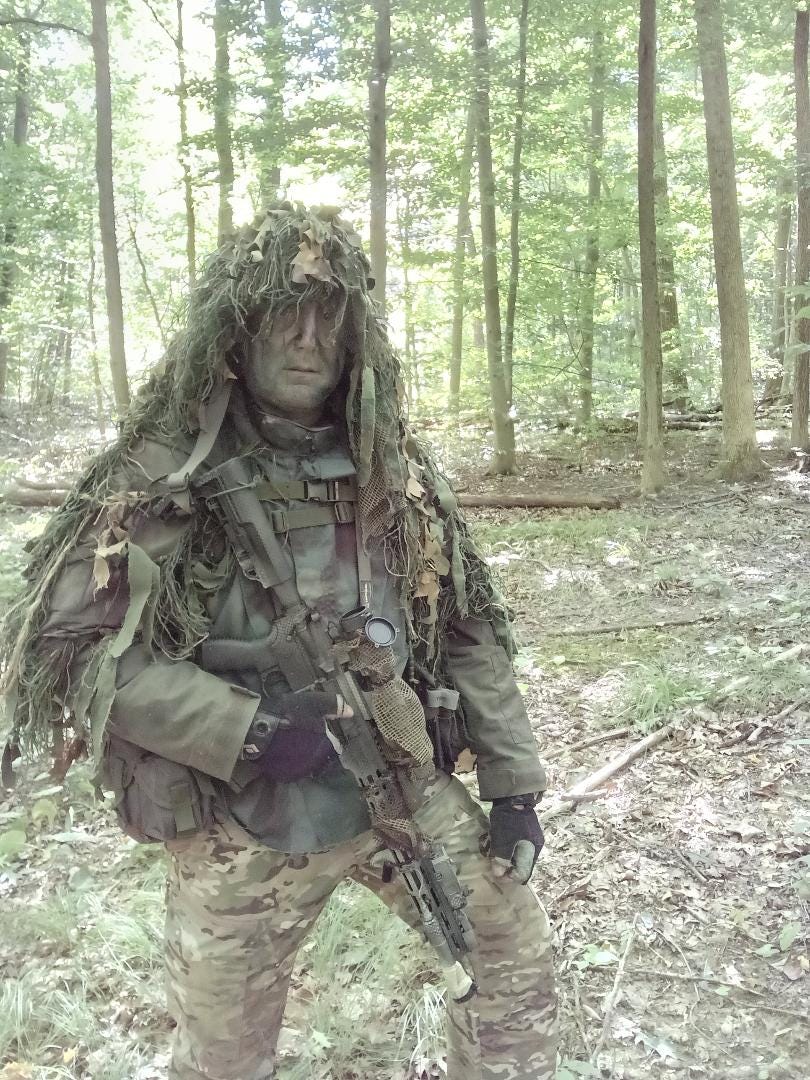
I’ve owned and worn the latest high tech clothing with fancy names in all types of environments including the woods, mountains, deserts, and on waterways and I’ve learned a thing or two along the way. One of which is that jeans do still work.
Be less operator like and more of a Frontiersman…
Many of the above Standing orders from Roberts Rangers still apply today.
THE AMAZON 34 ALPHA SPLIT RIG and LOADOUT
Through the years I have had the ability to thoroughly field test numerous chest rigs, belt kits, and more and last year I decided to pick up the Amazon cloned 34 Alpha Split Rig to try out. For context, my use case is foot patrolling a large forested property. Threats include poachers and 4-legged predators such as Coyote. These property patrols also are used to check on fence lines, gates, hunting plots, blow downs, game trails, and more. It provides a great opportunity for gear testing.
I’ve been intrigued with the split rig setup for awhile now and just didn’t see the need to drop $900 on the Spiritus setup but then came across the Amazon version and for $220 got the same setup. The goal here was to create a lightweight LBE of sorts that was more suitable for day long property patrols and could be supplemented with a rucksack for multi day/cold weather use.
My Loadout includes: (from left to right)
AR Mags x2
Radio w/PTT
TQ
GP Pouch
Water Bottle 1 Liter
Warming layer
Windshirt
Spare Socks
Fire Kit
Hydration Mixes
Water Tabs
Ration kit
Signal Panel
Water Bottle 1 Liter
Red Push Light
Write In The Rain Notebook w/pencil
Sharpie
Chemlight Buzzsaw
Spare Batteries
Electrical Tape
Pistol
Pistol Mag Pouch
Multitool
AR Mags x2
Behind Pouches from left to right
Trauma Shears
Pressure Bandage
AR Mag x1
AR Mag x1
Pistol Mag
So anyways, there is a lot of solid kit out there and you do not have to spend a fortune to get it or train in it. Know your purpose and perfect it.
If you are into Shamanistic/Ritualistic Tribal Music to set your mood, then you may enjoy the music of BANI. Click here to explore more music that is sure to set fire up your Nordic Spirit.
If he looks familiar it’s because that is DJ “The Metalhead Mercenary” from YouTube fame!
***He is also a fellow Minuteman***
Big Announcement in the coming weeks…
Later this year I will be traveling westward with a few of your favorite YouTubers as we test our abilities against an entrenched and seasoned OPFOR in Project Delta.
We are Recon Team Blackhorse!

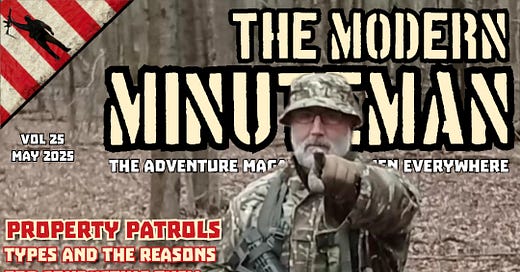



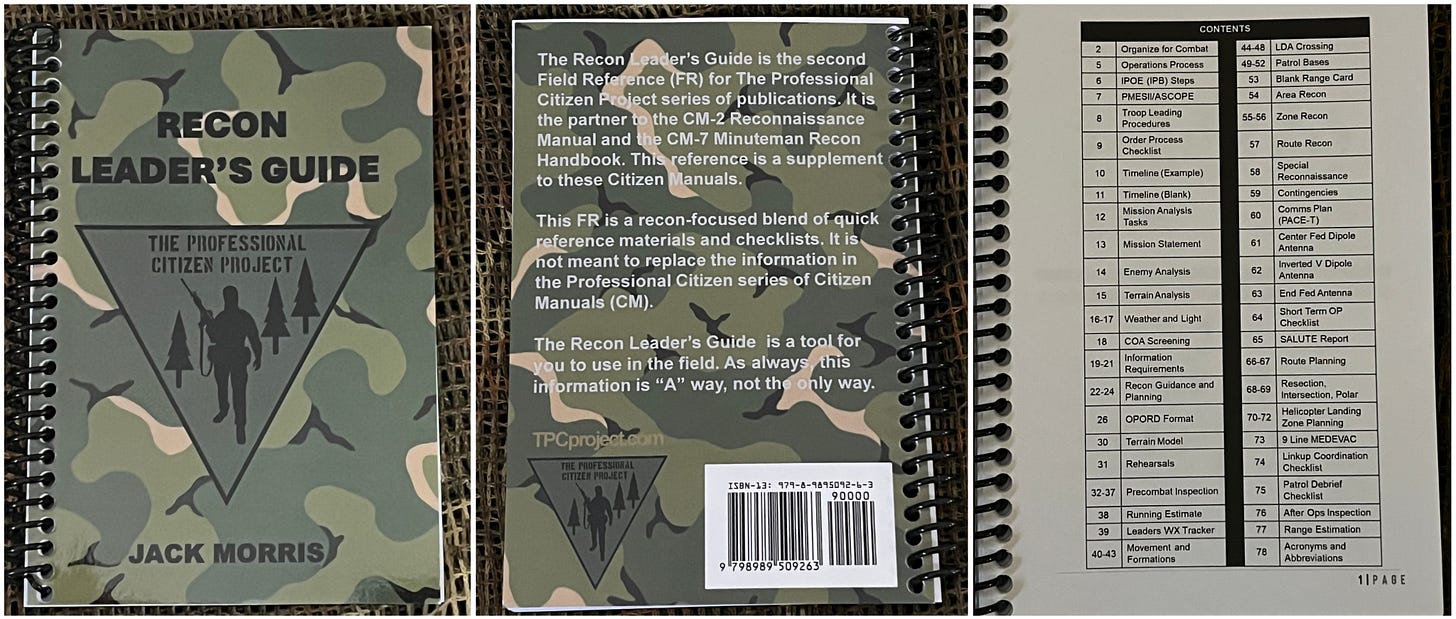

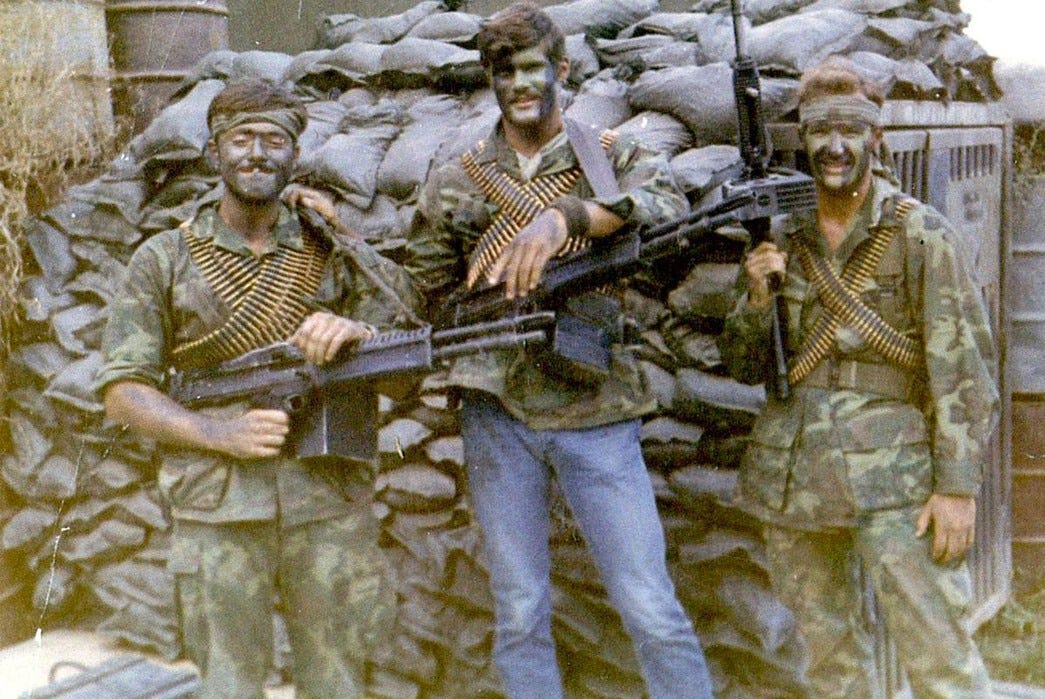

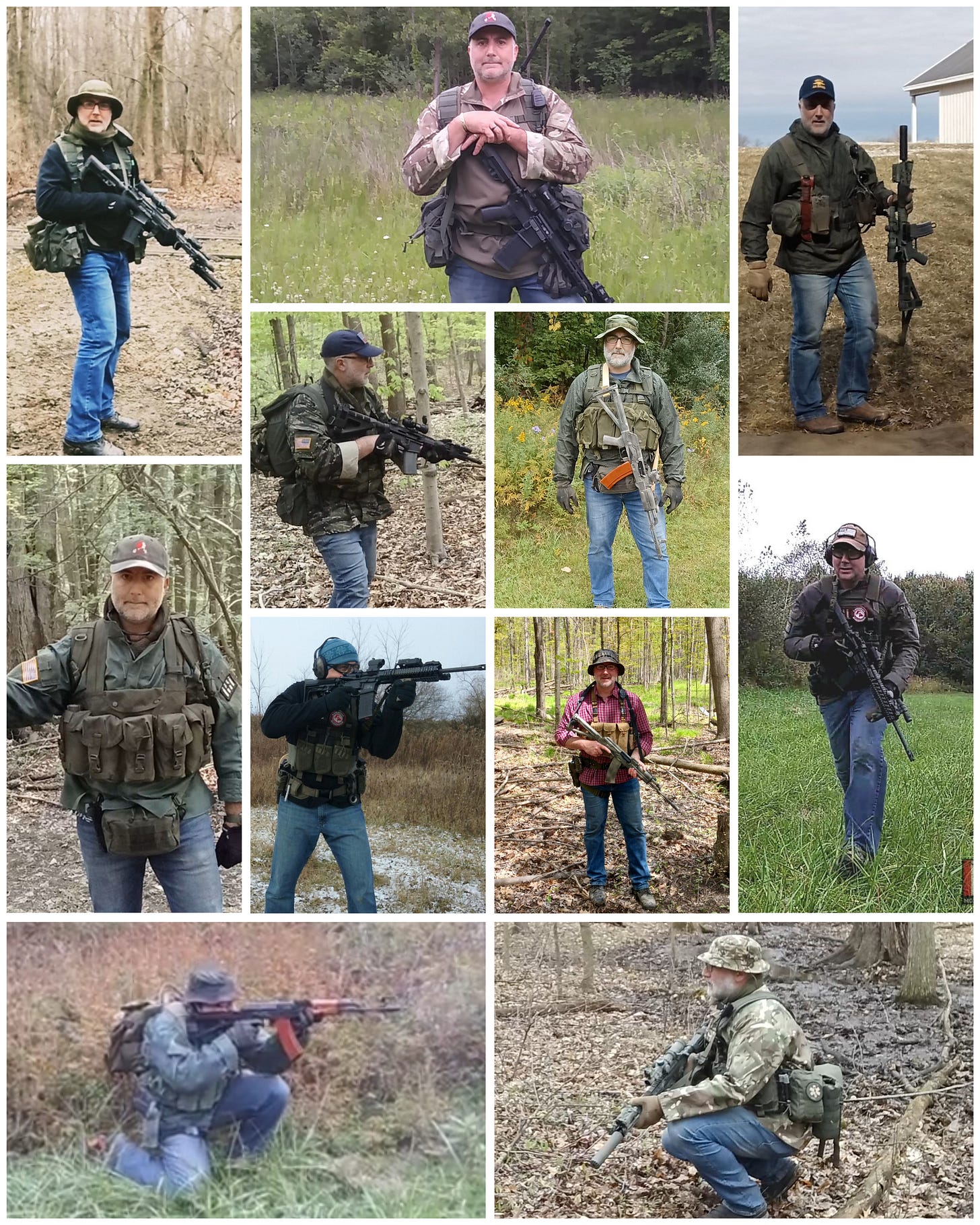
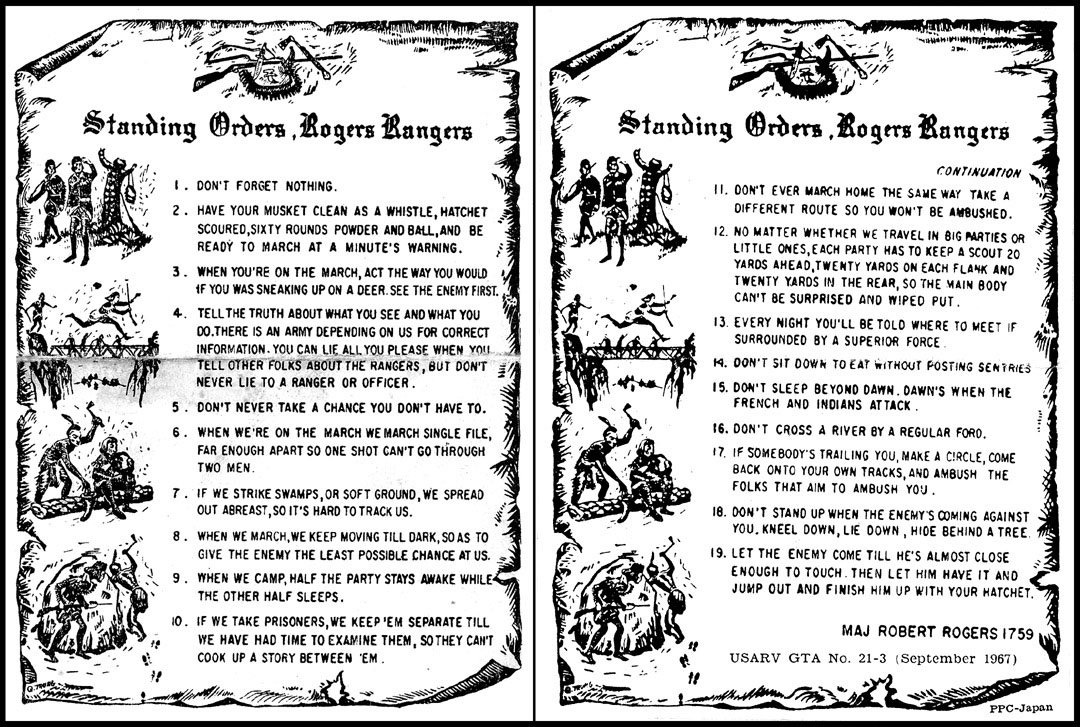


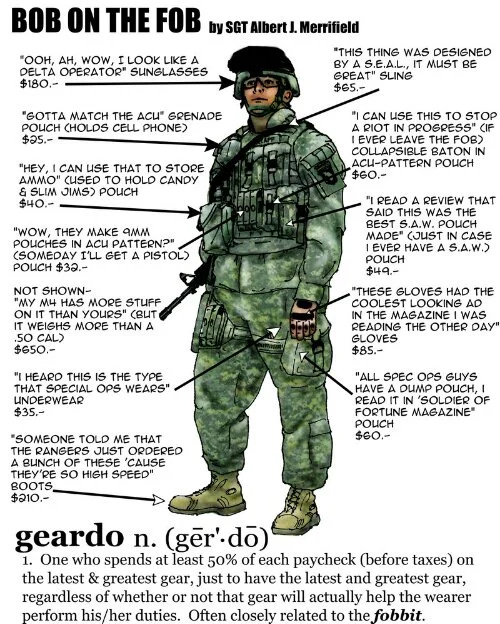

Great stuff brother, keep it up. You inspired me to take on the Norwegian Foot March. I'm a little older than you, while I completed the 18.6 miles, I didn't make time, so my hat's off to you.
Good info. I also practice patrolling my property. Perimeter and interior trails.
As for jeans, for a long time I've been a fan of Dickies carpenter pants. They are a heavier type of denim similar to Carhartt, and come in green, brown, and the tan or duck/khaki color like standard Carhartt jackets and pants. Here in NW Ohio the green is perfect for summer, brown is good in fall and winter. And with all the corn that surrounds my 10 acres of woods that my house is tucked into, the tan is perfect corn camo.